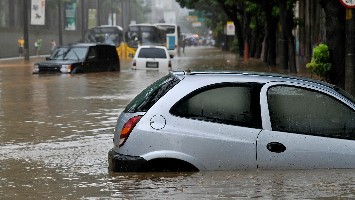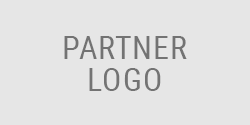FLM Step 14: Financial planning specialist on creating a safety net
In honor of Financial Literacy Month, we created a microsite that offers 30 simple steps to financial wellness–one for each day of the month. To enrich the experience, we asked some amazing people to guest post during the month on a topic that is related to the day’s step. Their dedication to financial literacy is truly inspiring! Today, Jeremy Vohwinkle, founder of Generation X Finance, writes about establishing an emergency savings fund.
In life, you need to expect the unexpected. If life throws you a financial curve ball, where do you turn for help? It could be an unexpected medical bill, a job loss, or any other crisis, but what happens when you’re faced with a sudden and unexpected financial hardship? This is where an emergency fund can make a difference by creating a financial safety net that prevents you from getting into an even worse situation.
Without some sort of emergency reserves you may be put in a position where you’re faced with being unable to pay some bills or take on some debt just to keep up. Obviously, you don’t want to miss any important payments since that can lead to costly late fees or even damaged credit. But if you have to take a loan or use credit cards to keep up with your bills, you’re now adding on even more debt that may come with a hefty interest rate which can amount to hundreds or even thousands of dollars in added finance charges, creating another financial crisis. Creating some sort of emergency savings should be one of your top priorities because a lack of this safety net can undermine your other financial goals in the event of an emergency.
Determine How Big Your Emergency Fund Should Be
So, just how much do you need to have set aside in your emergency fund? There are a lot of rules of thumb, but it really comes down to your specific situation. You need to take into account things like whether or not you’re married and have dual incomes, have children to support, and what your regular expenses are.
Having something is better than nothing, but in the end you should probably plan for the worst. Typically, this comes in the form of an extended job loss. What happens if you lose your primary source of income and can’t find a job for six months? In a tough economy, this isn’t that uncommon. So, to get a better idea of how much you might want to have saved, you need to take a look at your expenses.
Start by adding up your necessities such as housing, utilities, transportation and food. For example, if your monthly rent or mortgage payment is $1,000, you spend about $500 each month on groceries, $500 a month on transportation expenses, and another $200 a month on basic utilities, you’re looking at a bare minimum of $2,200 each month. If you are planning for a prolonged period of unemployment, you might look ahead six months and see that having $13,000 in your emergency fund is an adequate goal.
Keep in mind that the example above only covers some bare essentials. If you also have credit card bills or other financial obligations, you’ll want to include those as well. And it’s also important to note that you might be able to cut back on some expenses during a financial crisis. You may be able to cut your grocery bill down significantly by watching what you buy, and if you aren’t commuting to work while laid off, this might mean a savings in transportation expenses. This is why it’s important to plan for your specific situation.
Start Small
It can be intimidating to see what three or six month’s worth of expenses amounts to. Don’t let this deter you from getting started with your emergency fund. Remember, this is worst-case scenario planning and not likely to happen. What is likely to happen is you’ll encounter a number of small emergencies rather than one major emergency. So, having something saved is better than nothing, even if it’s only a small fraction of your total goal.
It could be a minor accident with your car, a medical procedure not covered under insurance, or your hot water heater going out. Whatever the case may be, even if you have just $500 set aside in your emergency fund, it’s one less thing you’ll have to borrow money for or charge on your credit card.
Make Saving Automatic
The hardest part of creating an emergency fund is actually putting the money aside. Saving tends to come as a last resort after all the other bills have been paid, and usually this means there is little to nothing left over to save. To combat this problem you need to pay yourself first and create an automatic savings plan.
This easiest way to do this is to set up a savings account at your bank and then link it to your existing checking account or set up your paycheck’s direct deposit to also deposit some of your paycheck into savings. The key here is to make sure something goes into your savings account every week or every other week along with your pay day deposits.
If the money automatically hits your savings account before you even have a chance to see it, you’re probably not even going to miss it. You can always start out small. It could be just $20 or $50 per paycheck, but once you start and realize you can get by without that money, you can slowly increase it slightly over time. Bump it up after a month or two and watch your savings start to grow.
Jeremy Vohwinkle is a Chartered Retirement Planning Counselor, founder of Generation X Finance, and the Financial Planning writer at About.com. Jeremy works with individuals to help improve their financial situations through education and planning.
















